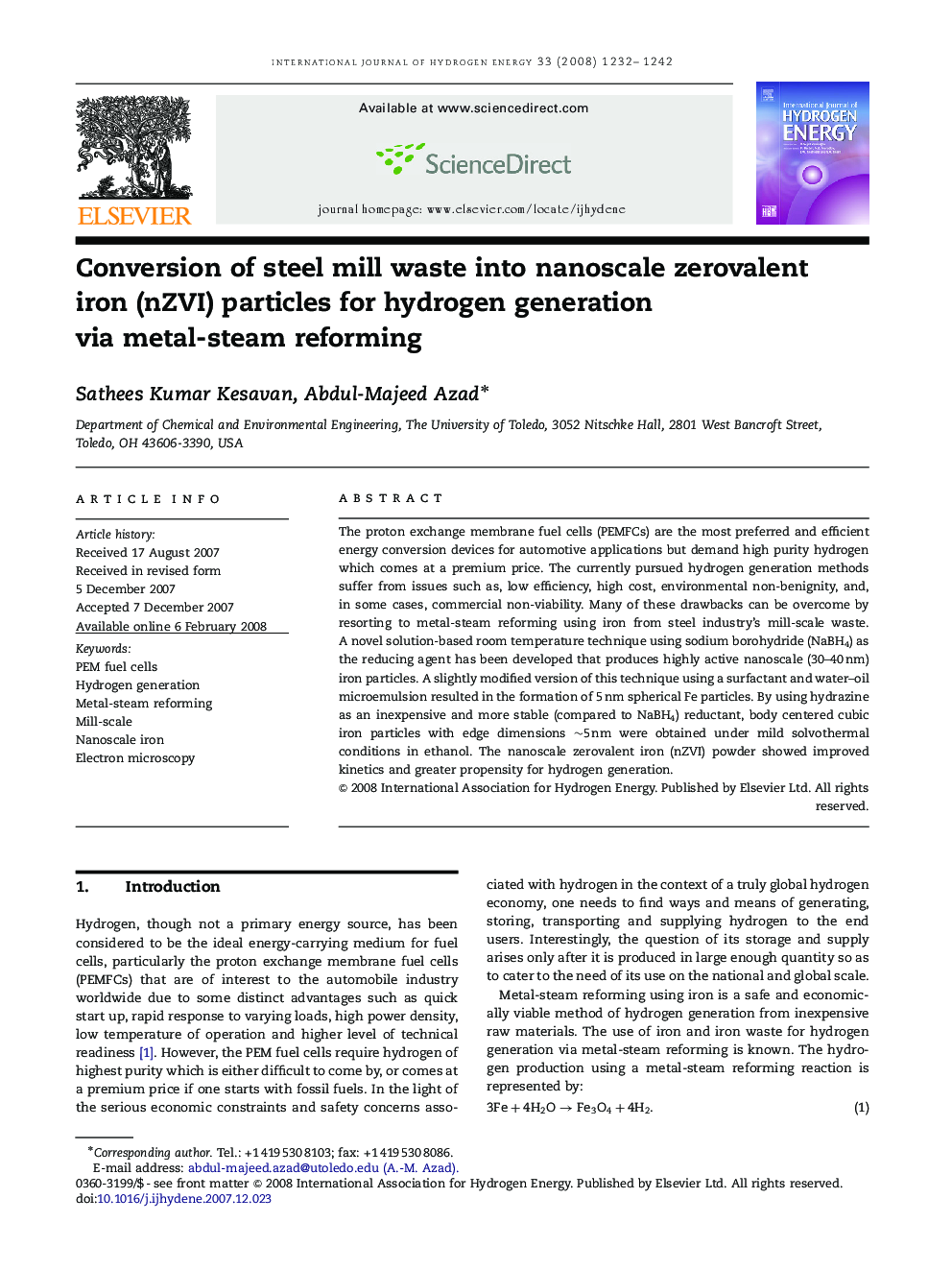| Article ID | Journal | Published Year | Pages | File Type |
|---|---|---|---|---|
| 1274697 | International Journal of Hydrogen Energy | 2008 | 11 Pages |
The proton exchange membrane fuel cells (PEMFCs) are the most preferred and efficient energy conversion devices for automotive applications but demand high purity hydrogen which comes at a premium price. The currently pursued hydrogen generation methods suffer from issues such as, low efficiency, high cost, environmental non-benignity, and, in some cases, commercial non-viability. Many of these drawbacks can be overcome by resorting to metal-steam reforming using iron from steel industry's mill-scale waste. A novel solution-based room temperature technique using sodium borohydride (NaBH4) as the reducing agent has been developed that produces highly active nanoscale (30–40 nm) iron particles. A slightly modified version of this technique using a surfactant and water–oil microemulsion resulted in the formation of 5 nm spherical Fe particles. By using hydrazine as an inexpensive and more stable (compared to NaBH4) reductant, body centered cubic iron particles with edge dimensions ∼5nm were obtained under mild solvothermal conditions in ethanol. The nanoscale zerovalent iron (nZVI) powder showed improved kinetics and greater propensity for hydrogen generation.
